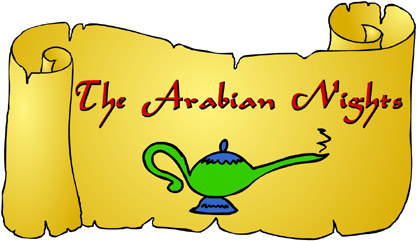
The Arabian Nights have a history that is largely mysterious. However, it is widely considered that they may include tales told by ancient travelers and merchants along the Chinese Silk Route. As they made their way from Northern China to the Middle East and Egypt, the travelers stopped in various towns and trading posts where they would tell these stories to each other for entertainment.
The tales were often told throughout the Middle East by traveling storytellers who presented them in oral fashion.
In 1704, Antoine Galland wrote the first European translation of some of the tales. He used a version of the Arabian Nights found in Syria dating to the fourteenth or fifteenth century.
Galland’s version contains several stories considered later additions to the collection that were not in any of the Arabic texts. These stories include ‘Aladdin and the Wonderful Lamp,’ ‘Ali Baba and the Forty Thieves,’ ‘The Ebony Horse,’ and ‘Prince Ahmed and his Two Sisters.’ Also, the Sinbad stories are thought to be a separate Persian series that was added to the Arabian Nights collection.
In the early nineteenth century, more versions of the stories appeared. These versions are known as the Calcutta I, Calcutta II, Bulaq Text, and the Breslau Text. They appear to contain more stories added to the series to make it come up to a full 1001 stories.
In 1885, Englishman Richard Francis Burton published his huge translation of the Calcutta II manuscript. This was a ten-volume effort that required many years of labor. It is still considered one of the most monumental translations efforts ever undertaken. He later followed this up with another six volumes of stories from other sources. It has come into vogue to criticize Burton’s translation by accusing him of over-indulging his penchant for elaborate, fanciful language and exaggeration. However, since there is no known ‘true’ version of the orally-communicated tales of the Arabian Nights, this is a less than convincing argument. The fact of the matter is, that of all the translations available, only Burton’s language soars to the heights demanded by the incredible fantasies spun by the tales. It is an uncommon pleasure to read a translator who is as playful with his English as the stories are with their situations. His work stands as the measure against which all English versions of the Arabian Nights should be compared.
Other versions of the tales were published by Edward Lane (1838), Andrew Lang (1898) and J.C. Mardrus (1899) into French.
For more information, you can try the following sites:
A History of the Arabian Nights Entertainments
The Book of One Thousand and One Nights – Wikipedia
Nice website, I also have more on the history of the Nights at the link here:
http://journalofthenights.blogspot.com/2009/05/what-is-arabian-nights-1001-nights.html
– M
stupid
DO YOU HAVE MORE STORIES
MMM.OK
Piraes of carribean nights is awonderfull story